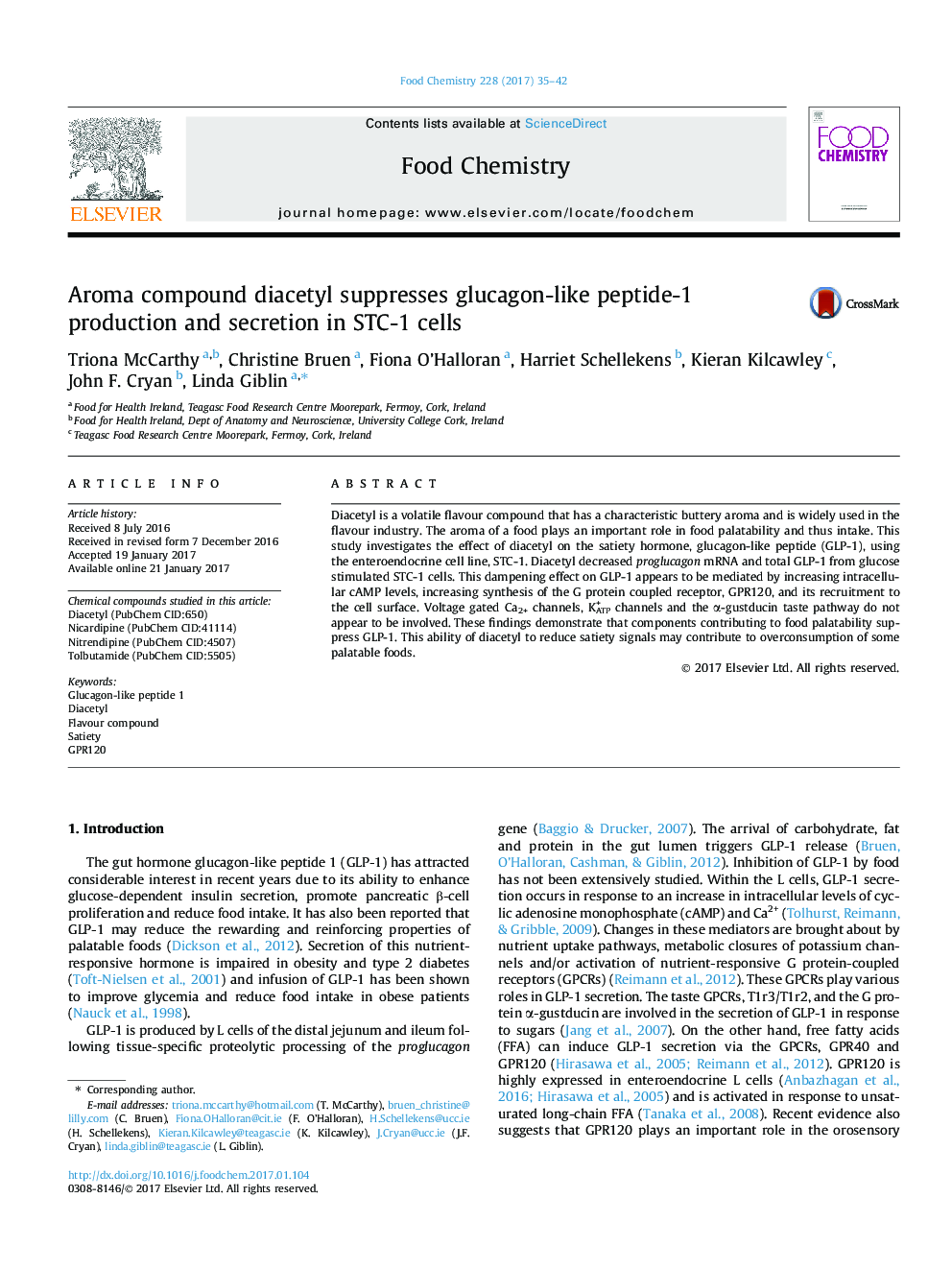| Article ID | Journal | Published Year | Pages | File Type |
|---|---|---|---|---|
| 5133814 | Food Chemistry | 2017 | 8 Pages |
â¢A volatile favour compound with a pleasant aroma supresses GLP-1, a satiety hormone.â¢Aromatic diacetyl recruits GPR120 to the cell surface and increases cAMP levels.â¢K+ATP channels, Ca2+ channels and the α-gustducin taste pathway are not involved.
Diacetyl is a volatile flavour compound that has a characteristic buttery aroma and is widely used in the flavour industry. The aroma of a food plays an important role in food palatability and thus intake. This study investigates the effect of diacetyl on the satiety hormone, glucagon-like peptide (GLP-1), using the enteroendocrine cell line, STC-1. Diacetyl decreased proglucagon mRNA and total GLP-1 from glucose stimulated STC-1 cells. This dampening effect on GLP-1 appears to be mediated by increasing intracellular cAMP levels, increasing synthesis of the G protein coupled receptor, GPR120, and its recruitment to the cell surface. Voltage gated Ca2+ channels, K+ATP channels and the α-gustducin taste pathway do not appear to be involved. These findings demonstrate that components contributing to food palatability suppress GLP-1. This ability of diacetyl to reduce satiety signals may contribute to overconsumption of some palatable foods.
